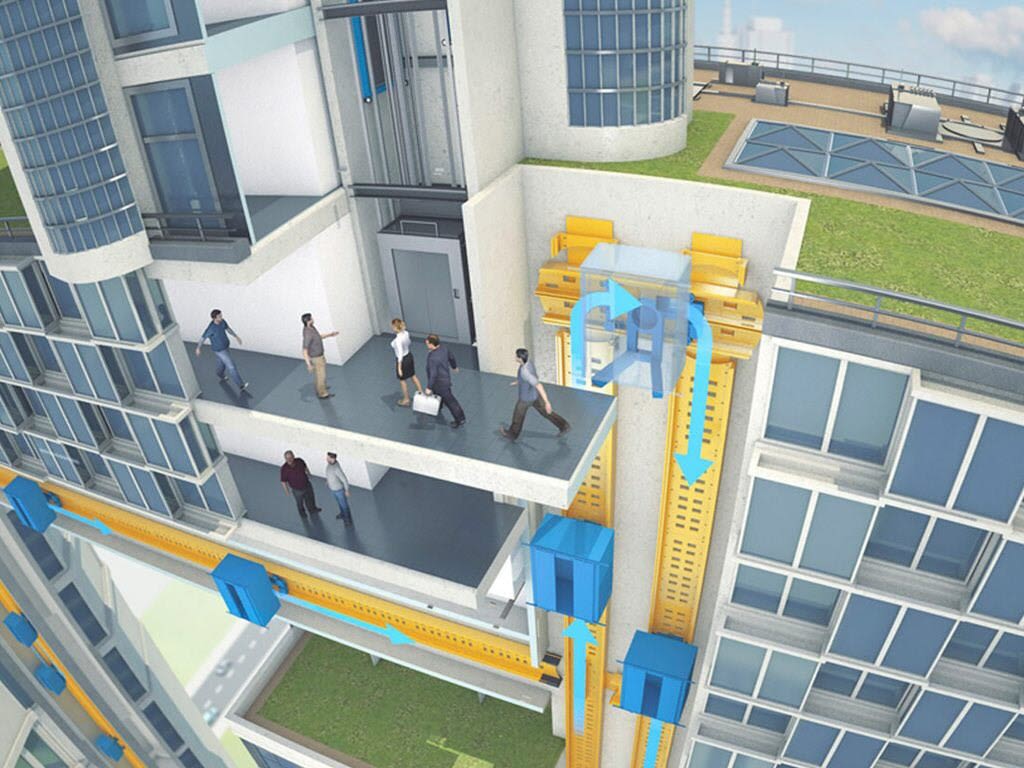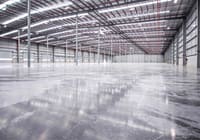
New elevators will help Australian cities reach new heights
In cities around the world, four large companies are competing in a race that could completely change the way tall buildings look.
The technology being developing could change urban design and the way people move around those buildings, and it’s all centred on the simple elevator.
The four big players – KONE, Thyssenkrupp, Schindler and Otis – dominate the global elevator industry, the technology for which has remained unchanged for more than 100 years.
But that’s all about to change. These companies predict new advances will soon allow for the creation of much taller buildings, and will also facilitate a move away from the traditional box-style skyscraper towards more unconventional, space-friendly designs.
KONE Australia and New Zealand managing director Pekka Kemppainen said the elevator industry was at an “inflection point for disruption”.
“There’s a lot happening with computing and new materials available, and now it’s more of a question of application,” Mr Kemppainen said.
Lifts play a surprisingly crucial role in the design of cities and the way we live our lives. In 2015 it was estimated that more than 840,000 new elevators were installed across the globe, and this number will only increase as urbanisation continues.
Along with rapidly increasing populations, there are huge demands for more commercial and residential space, and in many cities the only space left to build is to go up.
“We’re seeing urbanisation pretty much everywhere, not only in emerging markets,” Mr Kemppainen said.
“Lots of people want to live in bigger cities and the space is so scarce, so the direction is upwards.”
There have been several significant developments recently in elevator technologies that have the potential to change the design of cities.
Traditional elevators can only travel up to 500 metres high due to weight and other restrictions, severely limiting the construction of new commercial and residential buildings.
“The traditional 100-year-old technology of steel ropes is very robust and reliable but it’s also quite heavy and it starts to take up a lot of space in the building,” Mr Kemppainen said.
 The Auckland SkyTower, which is one of the first buildings in the world to use the Ultrarope elevator technology. Photo: QFSE Media
The Auckland SkyTower, which is one of the first buildings in the world to use the Ultrarope elevator technology. Photo: QFSE Media
“You need big equipment to carry the load of the ropes, then you have to get the power to accelerate those heavy masses. It becomes a little bit like a train – it’s heavy and slow-moving.”
KONE, which is based in Finland, recently revealed the Ultrarope, a “revolutionary breakthrough” using light-rope technology through a carbon fibre core with high friction coating.
The new design means lifts can travel up to one-kilometre high and will take up significantly less room in a building. The company said the Ultrarope technology could cut moving mass by 60 per cent and energy consumption by 15 per cent in a building that is 500 metres high, with these reductions increasing as the building gets higher.
“[Ultrarope] is much lighter and very strong. It enables us to provide a better solution for customers in higher buildings,” Mr Kemppainen said.
“It enables a more effective and efficient design of the building.”
Ultrarope is already being used in buildings including the Sky Tower in Auckland, and will be implemented in the soon-to-be-completed world’s tallest building in Saudi Arabia.
Another significant new lift technology is German company Thyssenkrupp’s MULTI system, which allows more than one elevator cab to travel in the same shaft at the same time – and also allows them to run horizontally as well as vertically. The design allows the elevator to work more efficiently and travel higher than traditional models as well, enabling building architects to move away from the traditional big-box model of skyscrapers.
Instead of using ropes the MULTI design uses a magnetic motor, allowing for the construction of large towers on smaller blocks of land.
The MULTI system just won the gold award at the 2017 Edison Awards, and has been installed in the company’s near-250-metre test tower in Germany.
Schindler was also incorporating new technology into its lifts, such as artificial intelligence and the Internet of Things, its Australian managing director Nicolas Breton said.
The company’s PORT technology offers destination control that was able to move people quicker and give a personalised service, reduce wait times and energy consumption.
“The extra flexibility in moving people up and down is really around the way people interact with the elevators,” Mr Breton said.
“We now have very fancy features, and we have the possibility to put some smarts into the elevators which change the way users interact with them.”
The use of technology in this way can also reduce the number of lifts needed in a large building, freeing up space for other uses.
“Destination control allows buildings to be higher, allows builders to build faster and also maximises the rentable space in a building,” Mr Breton said.
“If you have less lifts that can transport the same volume of passengers then you can rent more space in the same buildings. This is pushing buildings up. Every building can benefit from these developments in the future.”
This technology is already available in Australia and widely used, with Schindler recently picking up Elevator World Project of the Year for its installation at the Victoria Comprehensive Cancer Centre in Melbourne.
While elevators aren’t commonly seen as one of the pivotal elements in the design of a city, these companies say they are at the forefront of this change.
“We are in the business of improving people flow. We want to make cities better places to live,” Mr Kemppainen said.
“If you look at where people spend their time and get easily frustrated, it starts to be important.”
All of these advances would assist with the effectiveness and efficiency of building design, he said.
“There has been a contraction of space, so we need to be using buildings and space as efficiently as possible,” he said.
“These will mean you can use the maximum amount possible of a building.”












